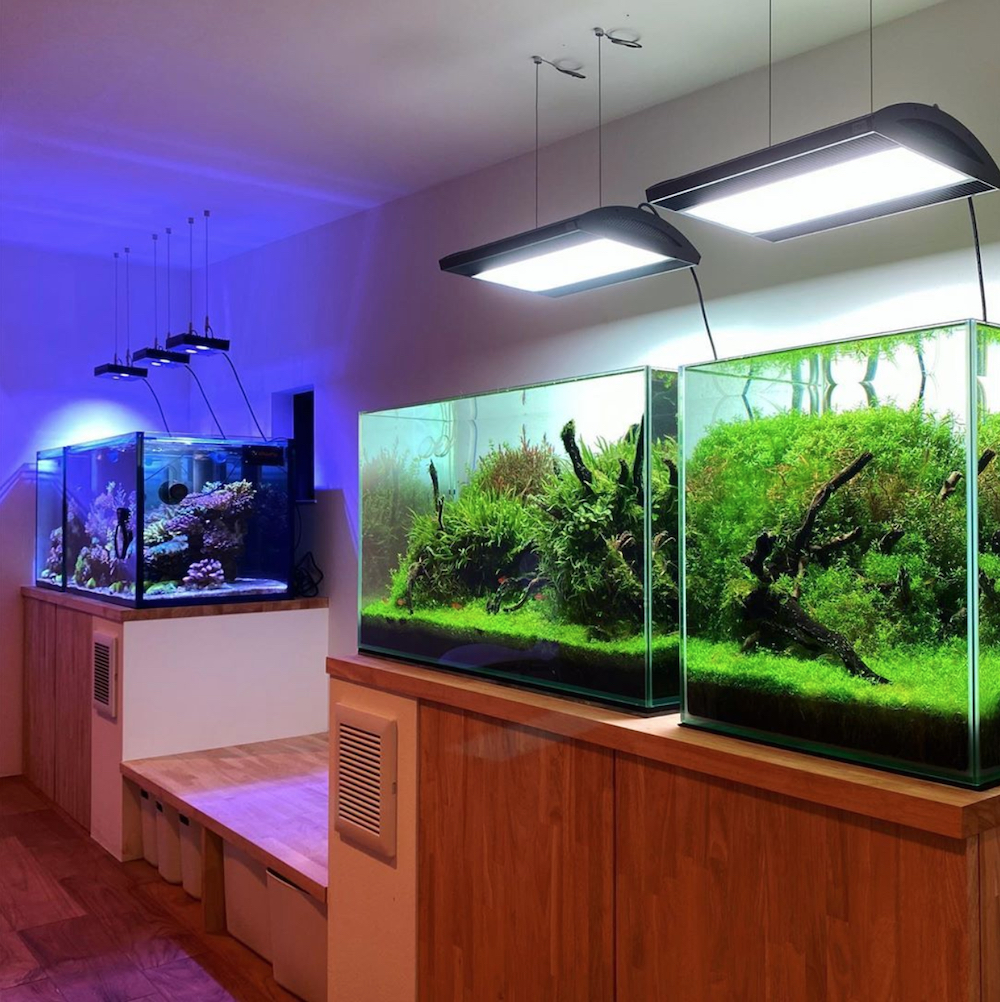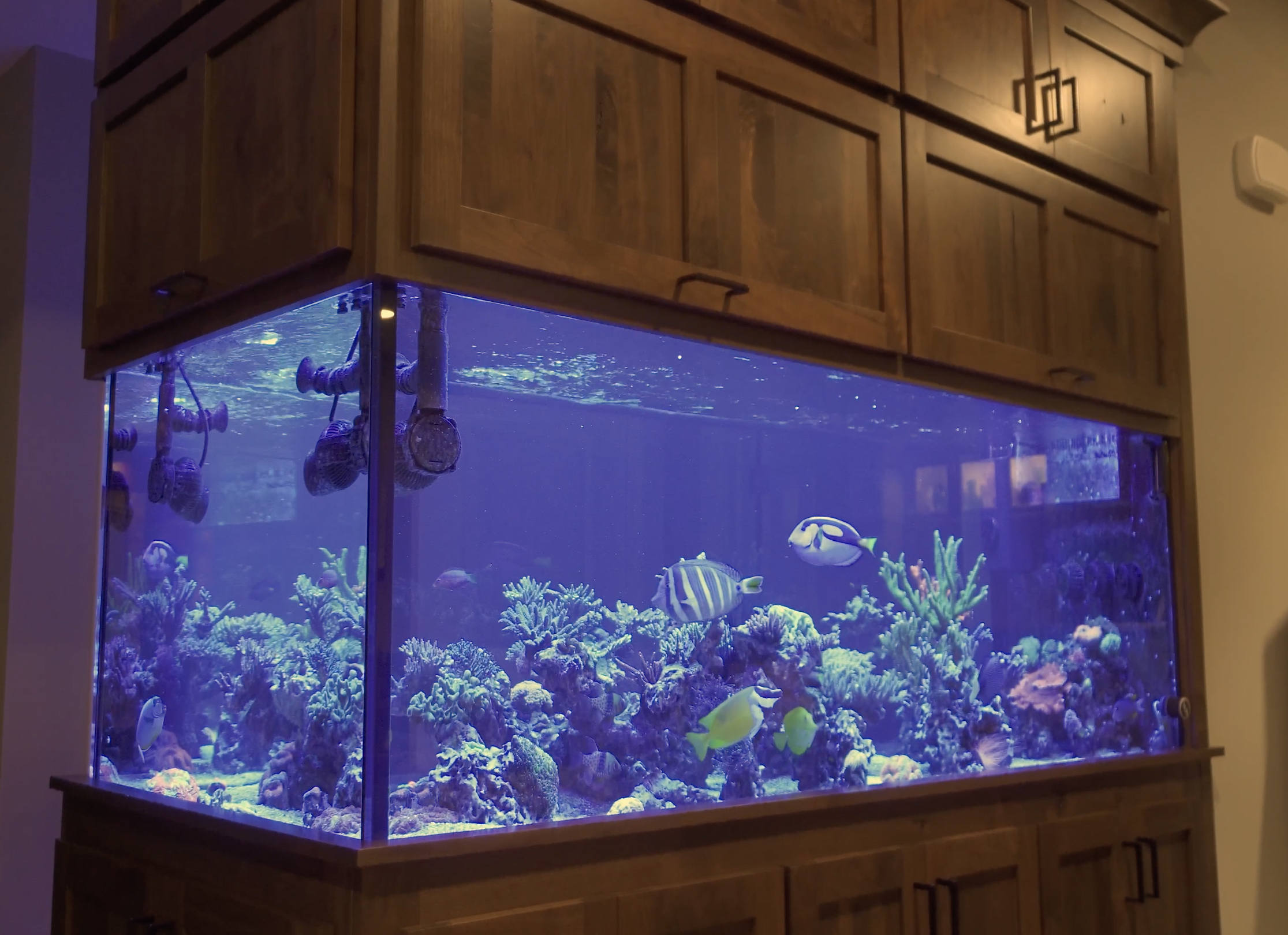A question I deal with daily at MRC can be summarized as “What size aquarium can I have and where should I put it?”. As a hobbyist, I would see this discussion often on the forums and as was normal back then, advice was all over the place with very little actual knowledge shared. People were quick to give answers based on the fact that their house hadn’t sustained damage from their aquarium..yet.
Just the other day I saw someone asking this very question on Facebook and I realized not much has changed. While I’m not a structural engineer, nor did I stay at a Holiday Inn Express, I can share some basic rules and guidelines that can help you estimate how large an aquarium your home can support and how to determine the best place for it. As always, consult a structural engineer for actual recommendations.

Let’s focus on residential buildings and start from the beginning. I’m going to further narrow this down to single-family homes (houses) in the U.S. Building codes vary from state to state and even from county to county, so always check your local building codes and regulations.
When houses are built, they’re built on dirt. This dirt is compacted to support a certain amount of weight without sinking. A foundation is then poured that supports the structure above (the house) and spreads that weight onto the dirt below. Houses in the U.S. are framed using wood studs, beams, and joists. When you think about it, wood was born to do this: the tree trunk sprouts from the dirt and supports all of its branches, leaves, and animals that call it home.
Not all wood is created equally and if you’ve been shopping for 2×4’s lately, you’ve undoubtedly noticed two options at the local Home Depot: premium and regular. Certain species of wood are stronger and stiffer than others resulting in a higher grade of wood. The higher the grade, the more weight it can support without deflecting. Deflection is how much something bends and you want your wood beams to bend as little as possible.

The floor in your home is designed to hold a certain amount of weight: dead loads and live loads. Dead loads are the things attached to the floor: walls, subfloor, carpet, etc. Live loads are things that are added and moveable: furniture, appliances, people, and aquariums. This weight capacity is stipulated in pounds per square foot (psf) and your typical residential specification for live loads is a minimum of 40 psf. I know what you’re thinking: there’s no way that’ll work! Using that specification, a 120-gallon (4’ x 2’) aquarium that takes up 8 square feet of space could only weigh 320 lbs! Luckily, it’s not that simple.
The live load rating covers the entire floor as if the weight was evenly distributed throughout. So, some areas in a room will have more weight than others, and if that total weight meets the live load rating, then you’re in the clear. To put that in perspective, the average living room size in the US measures 12’ x 18’, equating to around 216 square feet and a minimum live load capacity of 8,640 lbs. While the floor directly under the 120 aquarium will be supporting a lot more than 320 lbs, there’s areas in the room that are supporting virtually nothing.
Let’s say your aquarium including cabinetry weighs 1,500 lbs. That still leaves over 7,000 lbs of live load capacity in that room. Where you’ll start to get into trouble, though, is when you start adding multiple aquariums in that room. But we reefers would never dare to set up more than one aquarium…

The above is an overly simplistic example and there’s much more to take into consideration. Where in the room the aquarium is placed makes a big difference. The floor is strongest near the walls, especially above load-bearing walls, rather than in the middle of the room. And smaller rooms are generally stronger since the joists have shorter runs. If you were to hold a stick by its two ends and bend it, you’d notice it starts to bend in the middle first. The longer the stick, the easier it is to bend. Thinking of your flooring like the bending stick will be helpful when planning the aquarium’s location.
You have two types of walls in your home: partition walls and load-bearing walls. Partition walls are walls that divide the space into rooms, but don’t support any weight. Load-bearing walls also serve to divide the space, but they additionally play a structural role in the house. They support the weight of the upper floors and roof, transferring the weight to the foundation. So any time you can position your aquarium over a load-bearing wall, you should.
Your floor comprises of floor joists (usually 2 x 8’s or 2 x 10’s, 16” on center, supported by load-bearing walls or beams). Spreading the weight of the aquarium over multiple floor joists is advisable (perpendicular to the joists rather than parallel). If you have a basement or crawl space, you can usually see what direction the joists are running and plan accordingly.

Let’s take a closer look at that 120-gallon aquarium from earlier. If we place it perpendicular to the floor joists in the 12’ x 18’ room, it’ll rest on 4 joists. If those joists are running along the 12’ dimension, then the load capacity of those joists is 4 x 12 x 40 psf (1,920 lbs). With the aquarium weighing in at 1,500 lbs, we’re still in the clear. However, if we were only covering 3 joists, we’d be running dangerously close to the load capacity (over in fact). Since the specification is a minimum weight load, you’re likely still in the clear, but I’d much prefer to be safely within spec.
Not all is lost if your perfect location is somewhere where the weight is going to far exceed the weight load. Reinforcing the floor is a perfectly acceptable practice. This can be accomplished with vertical columns or beams (I-beams, 3-ply beams, etc.). This reinforcement needs to be done before filling the aquarium. You want to prevent the deflection from happening in the first place and trying to do so afterwards can be challenging and result in unintended consequences. Remember, it’s always better to prevent stress, both with the structure and in life!
Just to make things interesting, what if you wanted to put your aquarium upstairs in your bedroom? Well, the second-floor live load specification is usually 30 psf. And your attic is only specified for 20 psf. As you can see, the higher you go, the less weight the floor is designed to support. So where’s the best place to put your aquarium? If you have a basement, then your concrete slab is by far the strongest floor and best suited for heavier aquariums.
Even though the basement is the safest option, I always recommend installing your aquarium in the room that will get the most use; the one that makes it easiest to enjoy the aquarium. If you have to go out of your way to look at your aquarium, fewer people will see it and for less time. With that in mind, I tend to recommend the family room, over or next to a load-bearing wall, perpendicular to the floor joists.



